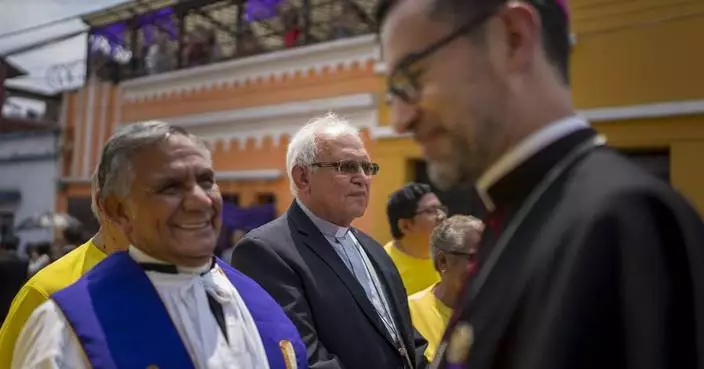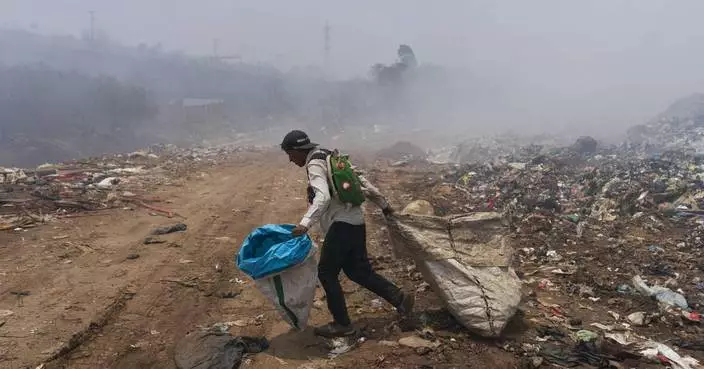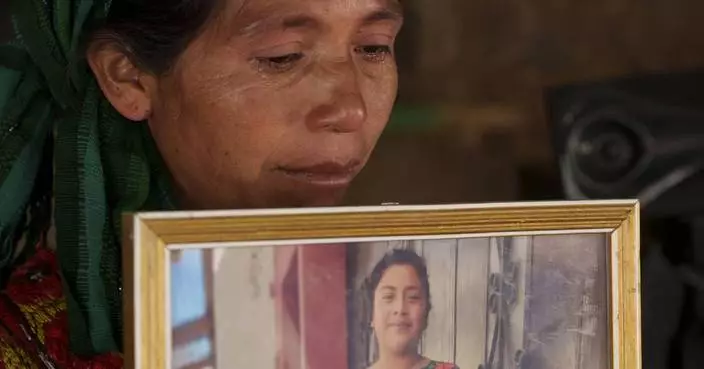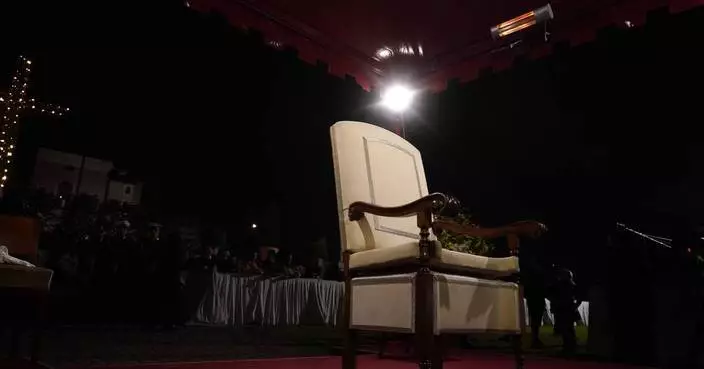Guatemalan authorities said Tuesday that five migrants survived the Jan. 22 massacre of 19 people, including 16 Guatemalans, in northern Mexico.
Foreign Minister Pedro Brolo said the five are being interviewed about the killings, whose motive still remains unclear.
The migrants were being taken toward the U.S. border by people smugglers when one or two of the trucks came under fire, apparently from a state police unit.
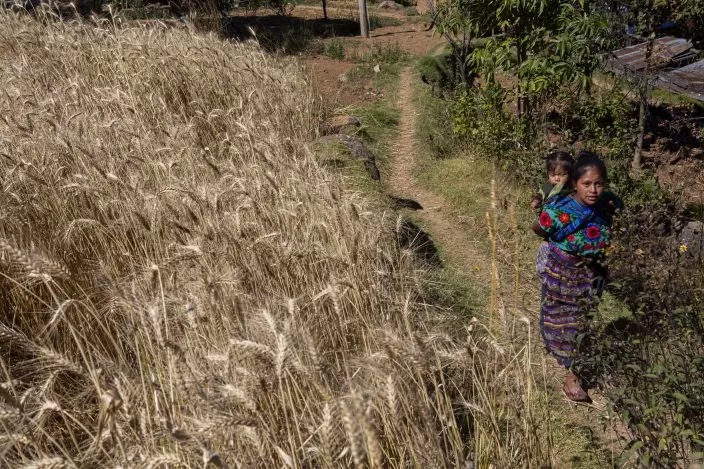
Adriana Mejia, a cousin of Guatemalan migrant Santa Cristina Garcia Perez, carries her daughter down a narrow path to her family's house in Comitancillo, Guatemala, Wednesday, Jan. 27, 2021. Relatives say they believe the charred corpses found in a northern Mexico border state on Saturday could be those of their loved ones. The country's Foreign Ministry said it was collecting DNA samples from a dozen relatives to see if there was a match with any of the bodies. (AP PhotoOliver de Ros)
But it was unclear whether the survivors had been close enough in the convoy to shed light on why police would have killed the migrants along with two armed smugglers' guards.
A dozen state police officers have been charged in the killings in the township of Camargo. Two trucks were set on fire and the victims' bodies were so badly charred that identification has taken weeks. The bodies of 16 Guatemalans and two Mexicans have been identified; the 19th body is still undergoing tests.
Brolo said the 16 bodies identified so far are expected to be returned to Guatemala around March 19. Mexican authorities asked for enough time to conduct forensic tests to strengthen their case.
The killings revived memories of the 2010 massacre of 72 migrants near the town of San Fernando in the same gang-ridden border state of Tamaulipas. Those killings were done by a drug cartel, while the Jan. 22 slayings allegedly were carried out by law enforcement.
But the two cases were similar: The 2010 massacre came to light in part because there were survivors. One, a wounded migrant from Ecuador who played dead, managed to make it to a military checkpoint.
Officials later said those migrants were killed after refusing an offer to work for a drug cartel, information that apparently came from the survivors.
Cartels in Mexico often charge migrant smugglers for crossing their territory and kidnap or kill migrants whose smugglers have paid a rival gang. Camargo is in an area that has been bloodied for years by turf battles between the remnants of the Gulf cartel and the old Zetas cartel.
Some of the relatives of the Guatemalan migrants killed on Jan. 22 told of receiving calls from the migrant smuggler who took the group of 10 males and three female north. The smuggler apparently survived, but told them their family members were dead.
The dozen officers charged in the killings were members of a 150-member Tamaulipas state Special Operations Group.
In 2019, prosecutors charged that the same police unit, then operating under a different name, pulled eight people from their homes in the border city of Nuevo Laredo, posed them in clothing and vehicles to make them look like criminals and shot them to death.
Authorities had warning of the problems in the unit, which was created last year from the remains of the special forces group accused of the 2019 killings and other atrocities. A federal legislator even filed a non-binding resolution in Mexico’s Congress in early January to protest beatings and robberies by the unit.
KYIV, Ukraine (AP) — More civilians died across Ukraine on Sunday as analysts warned that delays in U.S. military assistance would see Kyiv struggle to fight off Russian offensives.
One man was Sunday killed after a Russian drone hit the truck he was driving in the Sumy region, the local prosecutor’s office said. Elsewhere, a 67-year-old woman was killed after shelling hit an apartment block in the Donetsk region, said Gov. Vadym Filashkin.
Officials in the Kharkiv region also said Sunday that they had retrieved the bodies of a 61-year-old woman and a 68-year-old man killed by a Russian strike the previous day. Ten Russian Shahed-type drones were shot down over the Kharkiv region overnight, the Ukrainian Air Force said Sunday.
Meanwhile, shelling in the Russian-occupied Kherson region killed two civilians Sunday, said Moscow-installed leader Vladimir Saldo. Ukrainian drones were also reported in Russia’s Krasnodar and Belgorod regions and over the Black Sea, the Russian Defense Ministry said.
The news came as the Institute for the Study of War, a Washington-based think tank, warned that delays in Western military assistance would increasingly hamper Ukraine’s ability to push back Russian advances.
With the war in Ukraine entering its third year and a vital U.S. aid package for Kyiv stuck in Congress, Russia has used its edge in firepower and personnel to step up attacks across eastern Ukraine. It has increasingly used satellite-guided gliding bombs — dropped from planes from a safe distance — to pummel Ukrainian forces beset by a shortage of troops and ammunition.
In its report, the ISW said that Russian forces were prioritizing grinding, tactical gains with operational-level efforts focusing on the cities of Lyman, Chasiv Yar, and Pokrovsk.
“The Russian military command likely assesses that Ukrainian forces will be unable to defend against current and future Russian offensive operations due to delays in or the permanent end of U.S. military assistance,” the think tank said.
Ukraine’s military chief, Gen. Oleksandr Syrskyi, said Saturday that Ukraine’s battlefield situation in the industrial east had “significantly worsened in recent days,” as warming weather allowed Russian forces to launch a fresh push along several stretches of the more than 1,000-kilometer (620-mile) -long front line.
In an update on the Telegram messaging app, Syrskyi said that Russian forces had been “actively attacking” Ukrainian positions near the cities of Lyman, Bakhmut and Pokrovsk, and beginning to launch tank assaults as drier, warmer spring weather made it easier for heavy vehicles to move across previously muddy terrain.

Ukrainian refugees, playing roles of Ukrainian war prisoners, sing their country's national anthem at the end of an event in Bucharest, Romania, Saturday, April 13, 2024. Members of the Ukrainian refugee community staged an event dubbed "Voices of Captives" to raise awareness to the plight of Ukrainian servicemen and civilians still in Russian custody. (AP Photo/Vadim Ghirda)
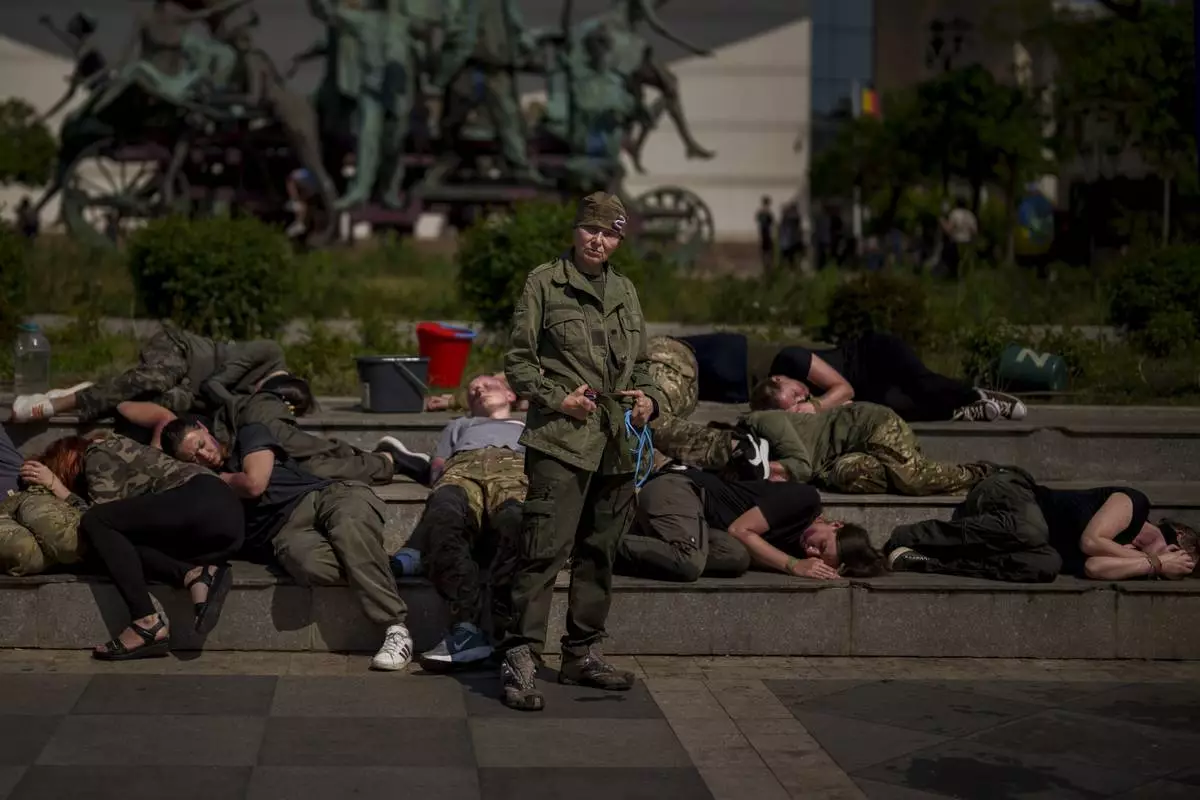
Ukrainian refugees, one impersonating a Russian soldier, other playing roles of Ukrainian war prisoners, perform during an event in Bucharest, Romania, Saturday, April 13, 2024. Members of the Ukrainian refugee community staged an event dubbed "Voices of Captives" to raise awareness to the plight of Ukrainian servicemen and civilians still in Russian custody. (AP Photo/Vadim Ghirda)
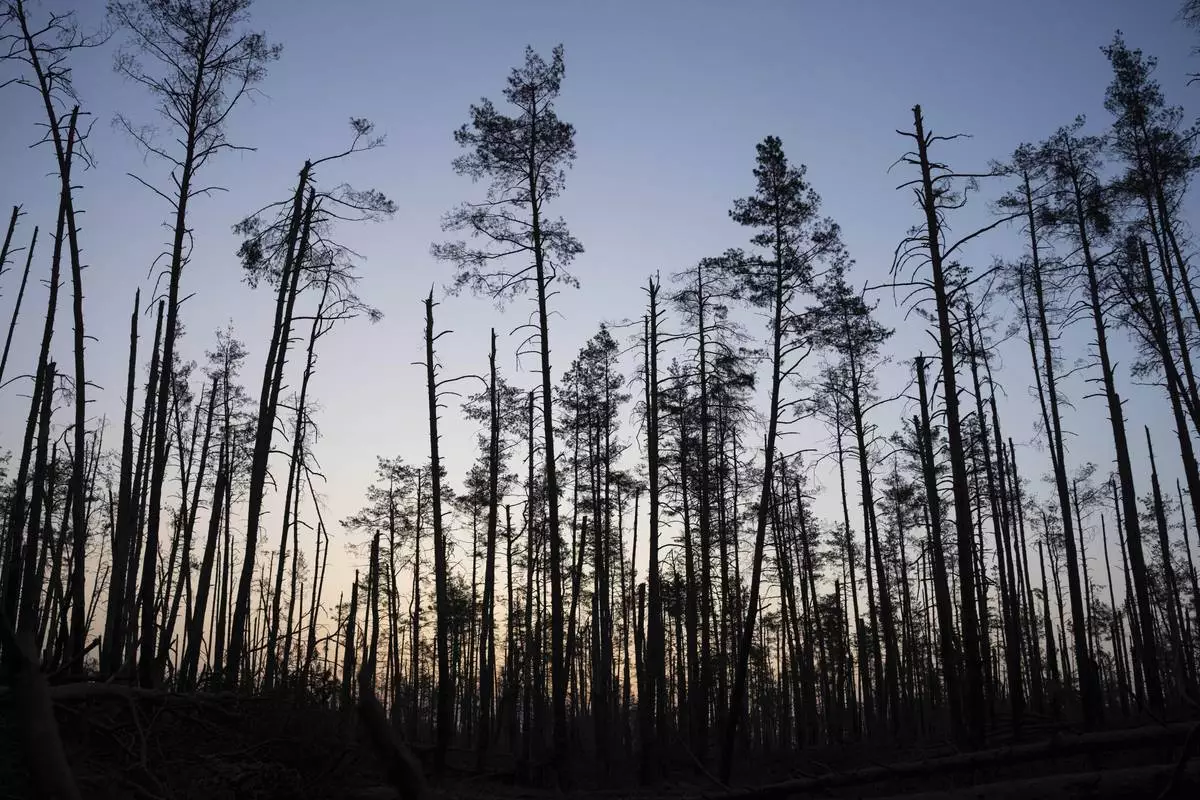
Damaged trees are seen in the forest around one kilometer away from Russian forces on the frontline in Kreminna direction, Donetsk region, Ukraine, Friday, April 12, 2024. (AP Photo/Alex Babenko)
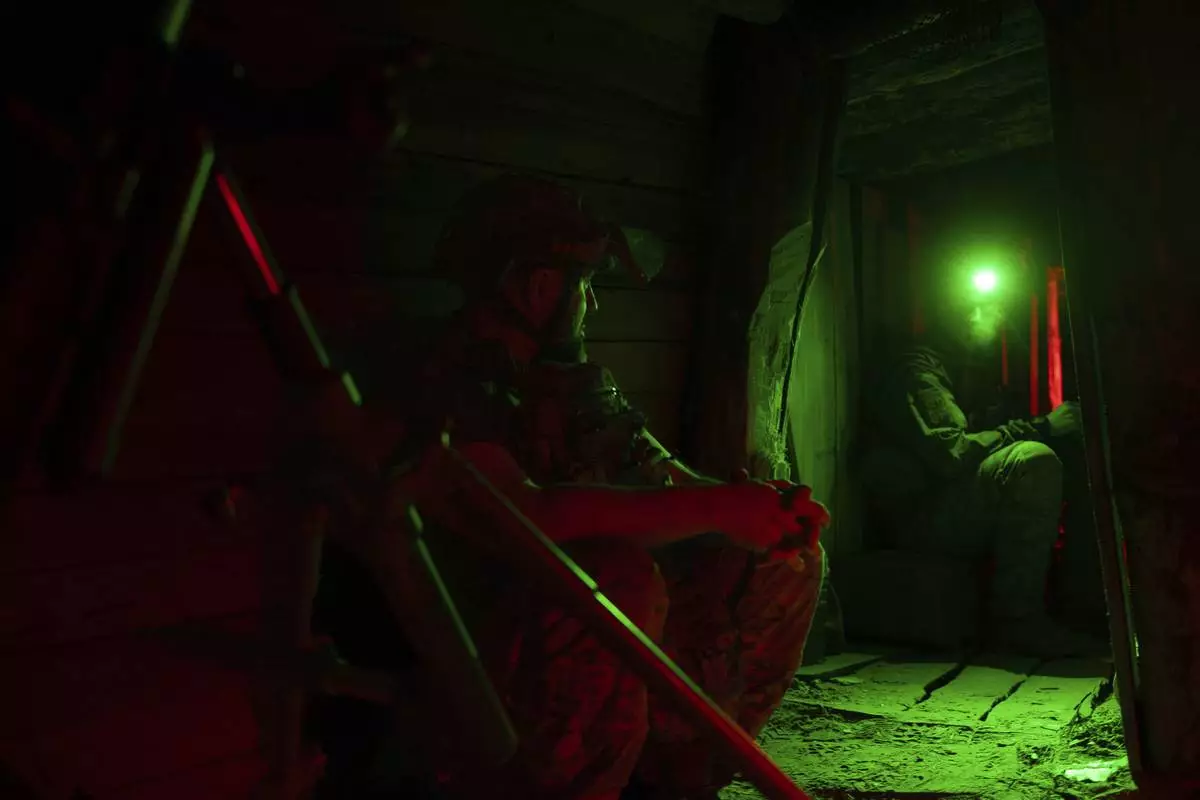
Ukrainian servicemen from the Azov brigade, known by call sign Batya, left, and Buk, right, wait for a command to fire, at positions of 122 mm HM 16 mortar around one kilometer away from Russian forces on the frontline in Kreminna direction, Donetsk region, Ukraine, Friday, April 12, 2024. (AP Photo/Alex Babenko)
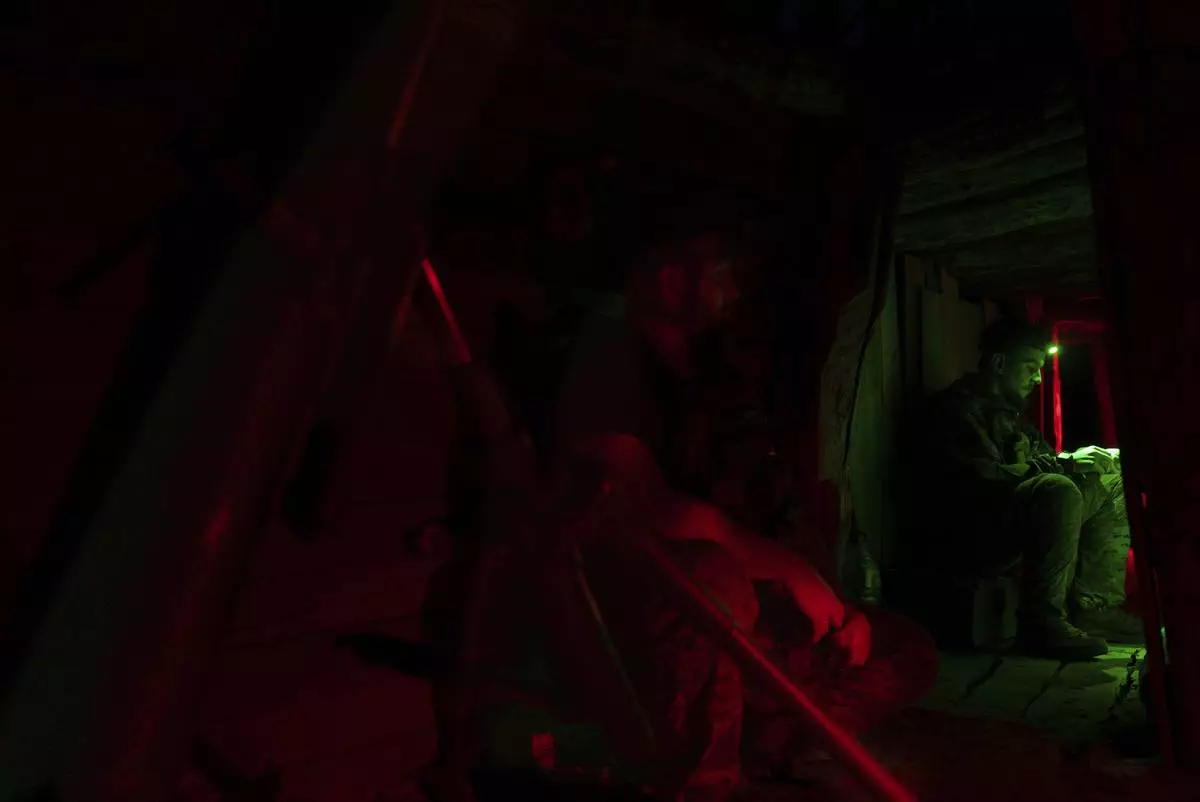
Ukrainian servicemen from the Azov brigade, known by the call sign Batya, left, and Buk, right, wait for a command to fire, at positions of 122 mm HM 16 mortar around one kilometer away from Russian forces on the frontline in Kreminna direction, Donetsk region, Ukraine, Friday, April 12, 2024. (AP Photo/Alex Babenko)
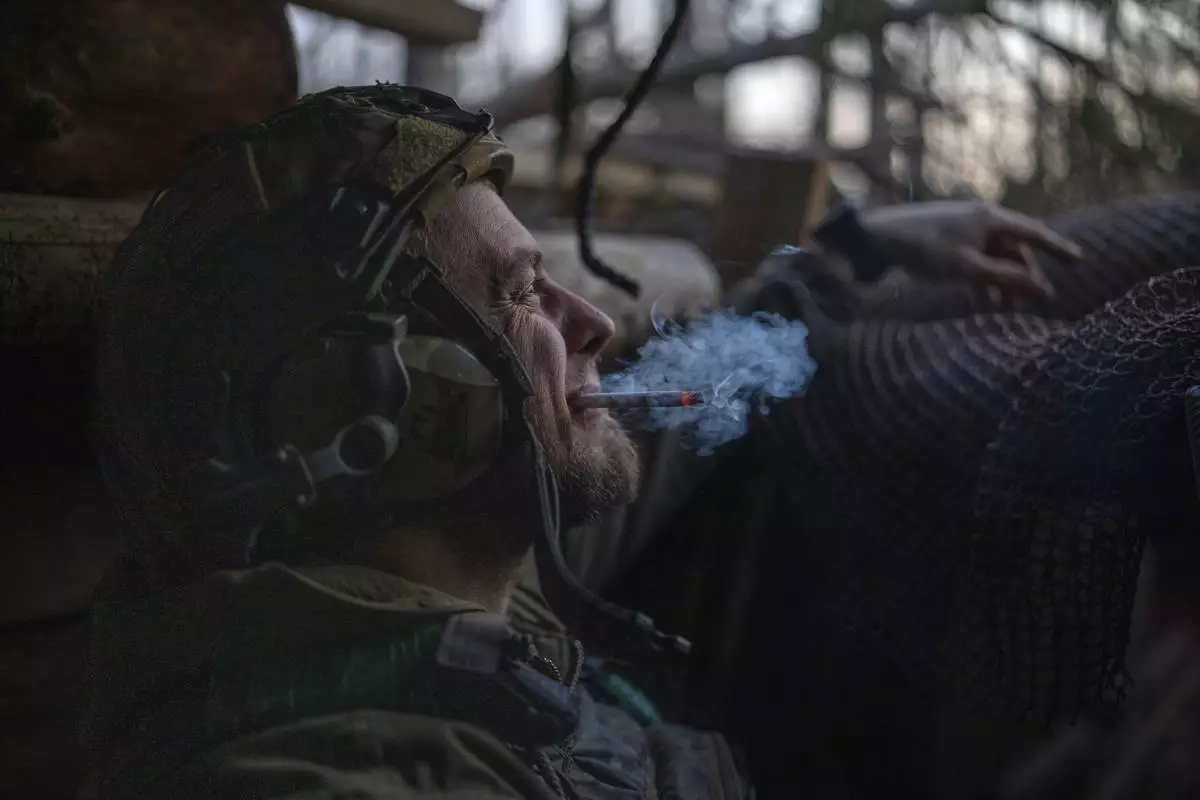
A Ukrainian serviceman from the Azov brigade, known by the call sign Chaos, smokes a cigarette while he waits for a command to fire, in a dugout around one kilometer away from Russian forces on the frontline in Kreminna direction, Donetsk region, Ukraine, Friday, April 12, 2024. (AP Photo/Alex Babenko)
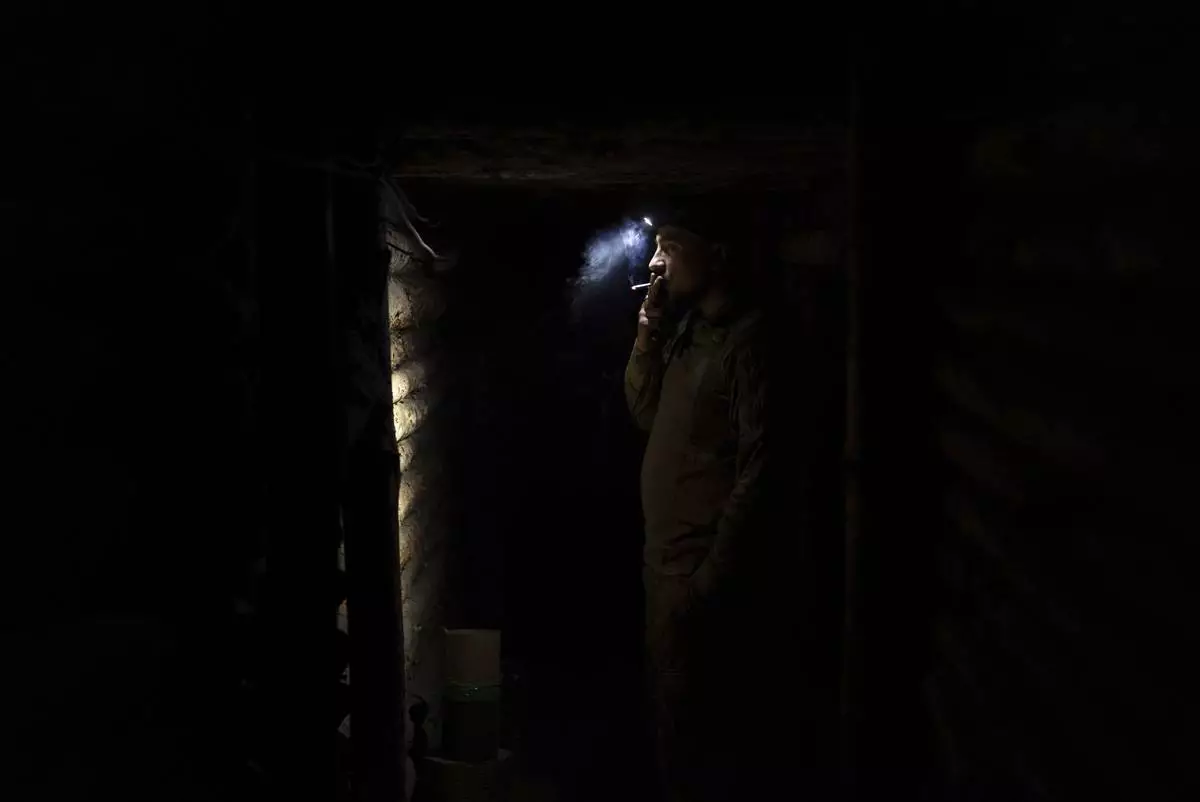
A Ukrainian serviceman from the Azov brigade, known by the call sign Yenot, smokes a cigarette in trenches around one kilometer away from Russian forces on the frontline in Kreminna direction, Donetsk region, Ukraine, Friday, April 12, 2024. (AP Photo/Alex Babenko)
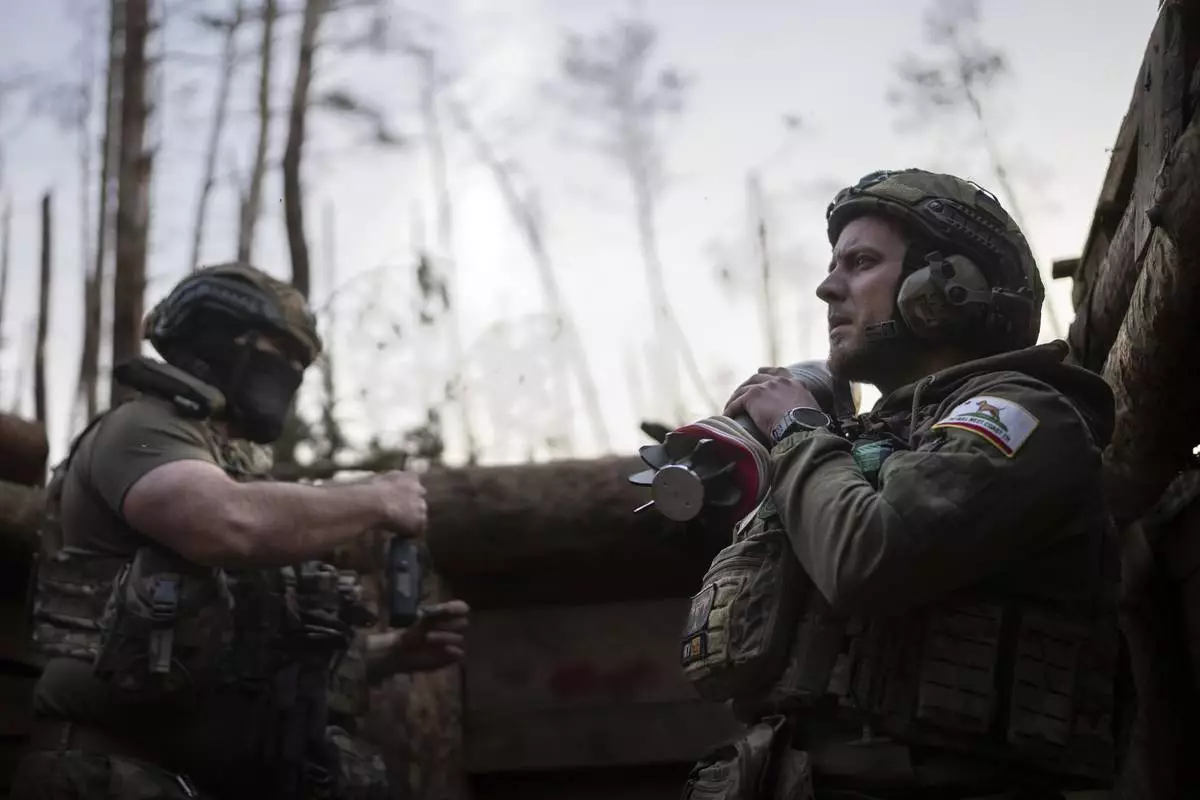
A Ukrainian serviceman from the Azov brigade known by call sign Chaos, right, carries mortar shell, while he waits for a command to fire, at positions of 122 mm HM 16 mortar around one kilometer away from Russian forces on the frontline in Kreminna direction, Donetsk region, Ukraine, Friday, April 12, 2024. (AP Photo/Alex Babenko)












